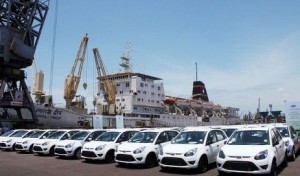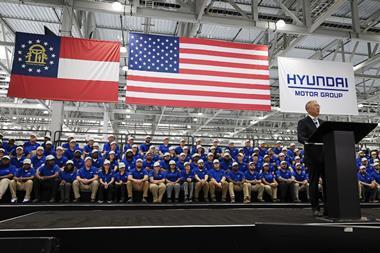 According to data compiled by India's engineering exporters' body, the Engineering Export Promotion Council (EEPC), the combined value of the country's exports of finished vehicles and auto parts increased by 25% in April 2014.
According to data compiled by India's engineering exporters' body, the Engineering Export Promotion Council (EEPC), the combined value of the country's exports of finished vehicles and auto parts increased by 25% in April 2014.
This figure includes exports of cars, as well as two- and three-wheel vehicles. The latter group grew by 27% overall, while automotive components were up by 26%. That figure could increase following comments from Ford’s CEO Alan Mulally that indicate India will become an export hub for the carmaker.
EEPC India chairman Anupam Shah said that export shipments of passenger vehicles alone rose just more than 23% to $444m during April 2014 from $358m in the same month last year, “bringing in some consolation for the manufacturers who are facing tormenting times back home," added Shah.
While that figure dropped almost 9% to 41,600 in May 2013, there is now an incentive to build on the figures for the preceding month.
"We need to build on (automobile) exports and make this a trend, rather than a one-off event, by devising a smart strategy,” said Shah. “The good thing is that the new government led by Prime Minister Narendra Modi is committed to accord priority to manufacturing.”
Ford is one carmaker looking likely to make good on those plans. Ford’s Mulally said recently that India was one of the carmaker’s fastest growing markets and would make an excellent export hub.
"It is because our (Ford India) operations are great, our quality is great and our efficiency is great,” said a modest Mulally. “Its just that the location of India is great for us (as a place to generate exports).
Ford India currently operates two manufacturing plants: in Gujarat and at Maraimalai Nagar, close to Chennai. In India, the company specialises in the small car segment.
The carmaker intends to use India to export its EcoSport and will exploit lower labour rates to provide relatively high-end technology.
Low-cost skilled labour availability is driving this reappraisal of India as a hub, especially since finished vehicles are already exported there to more than 100 countries.
However, it is not the only manufacturer intent on developing operations in India to export to Europe and other emerging markets. Honda, for example, already exports its Amaze to South Africa and Nepal, while Toyota ships vehicles from India to both Australia and South Africa. Yamaha is also reported to be exploring the country's export potential.
As for the auto components export business, this is forecast to amount to $30 billion by 2020-21.

























![Global[1]](https://d3n5uof8vony13.cloudfront.net/Pictures/web/a/d/s/global1_726550.svgz)










